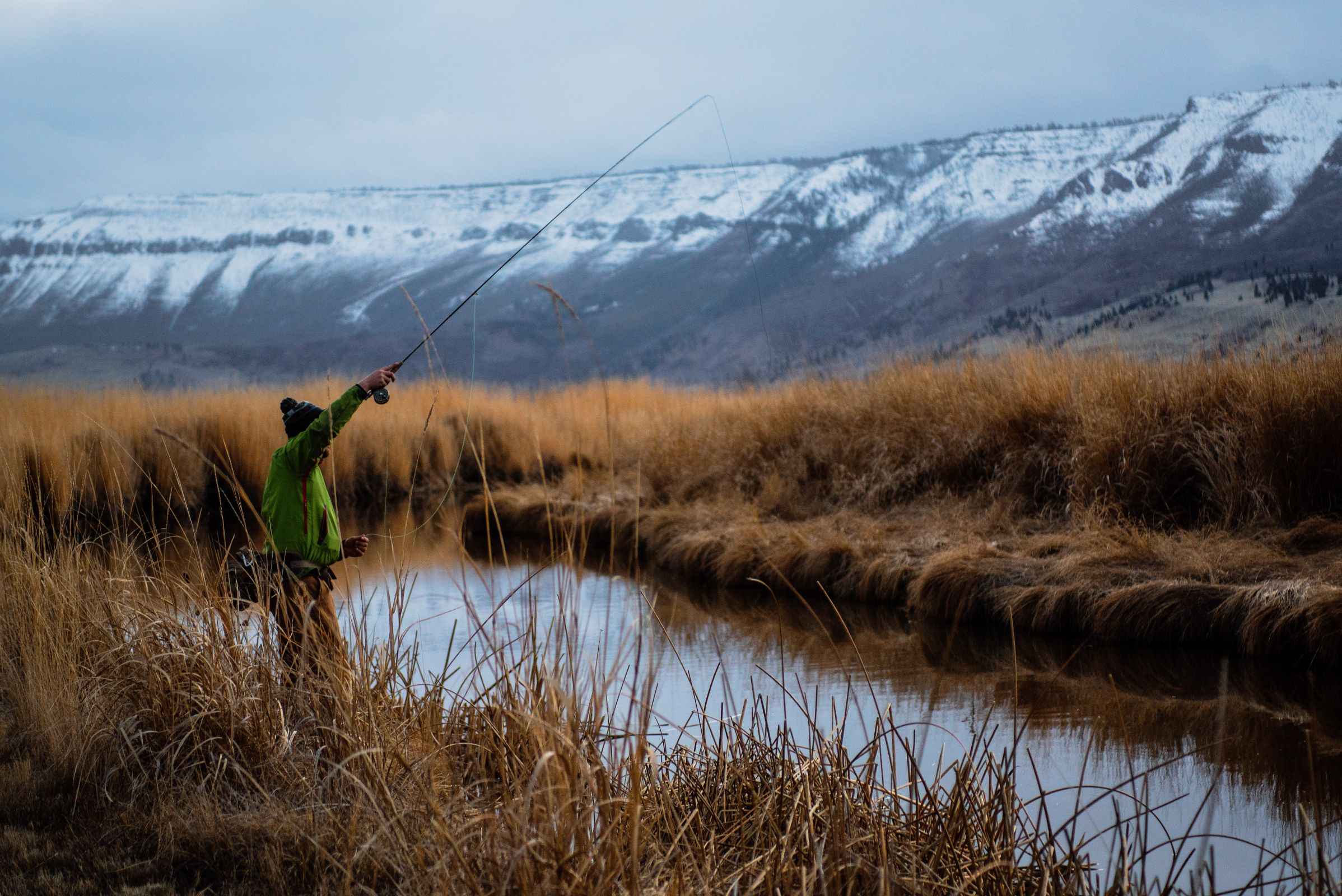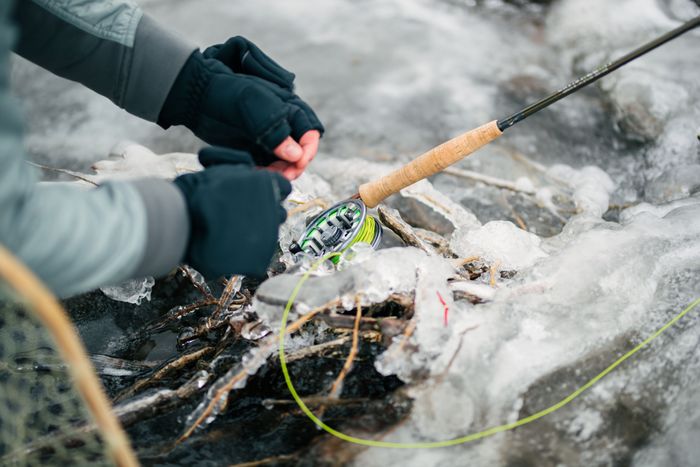Winter Fly Fishing Tips
Do you want to go fishing in winter but unsure of what to do? Here is a guide to everything you need to know before you go winter fishing.

Fly fishing is a popular freshwater fishing technique during the warm seasons. Fish are active and swimming abundantly in rivers, lakes, and creeks. However, when the temperature drops, their number can go low.
But do you know that you can still go fly fishing during the winter season? Despite not being the popular season, you can still have a great time casting and reeling in fantastic fish. It’s just that it won’t be as easy or the same as the other seasons.

What Makes Fly Fishing Different During Winter
Unlike the other seasons, winter poses a different challenge to anglers. For one, the frigid temperature changes many factors: the environment, fish and bugs available, and the water you’re fishing in. Since this is nature’s doing, it should be you, the angler, who needs to adjust to all these conditions.
Expect ice during the winter, especially in regions where the temperature drops drastically and often snows. The icy surface can pose a different challenge (and danger) to anglers, so choose your fishing location carefully.
You cannot expect the same species and the same number of fish available in the water. Most fish hibernate, spawn, or migrate during this season. However, don’t worry about not catching anything. There are still some good fish to catch during winter, like northern pike, perch, walleye, and trout.
Most of all, since the environment around you is changing, you have to adjust your gear – what you wear and the fishing gear you use. If you still want to enjoy fly fishing despite the cold weather, here are a few tips to make a great catch.

6 Winter Fly Fishing Tips
The essential tips in winter fly fishing include searching for the right fishing spot, proper winter clothing for your fishing trip, and checking the area's temperature (land and water). But there are more specific things to note that you need to change when fly fishing for this season.

1. Use Strike Indicator
Look for a strike indicator that does not sink under the surface, so you won’t miss soft strikes when a fish bites. Use high-floating materials like foam footballs or yarn (but it must be a bigger piece), allowing depth adjustment and can still float even when you’re using a heavy rig.
2. Dead Drift Nymphing
With your strike indicator, use a nymph or egg pattern underneath it and drift according to the river current's speed. When the fish see that their potential prey is moving slowly or looks like it is injured or dead, they’ll bite into it in an instant.
During the winter, fish want to preserve their energy. Instead of chasing a nymph or fly intensively, they want to prey on slow-moving, injured, or dead prey.
3. Weighted Fly (or Lose them)
In most seasons, anglers love to use a light fly as a lure. That is only effective when the water is warm and the fish swim in the shallow. In the winter, however, fish stay at the bottom. Thus, you need a weighted, much heavier fly, so it sinks and hugs the bottom enough for the fish to notice and eventually strike.
However, if you don’t have a weighted fly, know that you will lose some flies. Lighter flies don’t go deep enough to hug the bottom of the water where the fish are. What anglers do is they use long leaders to have enough weight for the flies to reach the bottom. This technique might mean you’ll lose some flies, but at least you’ll get to catch some fish than none at all.
4. The ‘High Stick’ Method
High sticking is a fly fishing method wherein you need to raise the fly rod high to avoid your line touching the water or at least minimize it. When fish spot the fly but can see a line, it hints that it is artificial and is only used to lure them to the hook.
Minimizing or avoiding your line to touch the water gives an illusion of a more natural mimicry of a fly. You’ll find yourself with a great catch in a few minutes if you use this method, especially during the winter.

5. Light vs. Heavy Tippets
Use light tippets when fishing in small midge patterns in slow waters so fish won’t see it and think it’s just an angler baiting them out.
However, when you’re fishing on cold mountain streams, use a heavier tippet. Fish in more frigid waters like to preserve their energy and would bite into something bigger to get and store more energy in as little effort as possible.
If you’re not sure of the water’s condition, you can try using a light tippet first and switch to a heavier one when nothing bites in your first few tries.
6. Fish in Tailwater
Freestone rivers often get cold during the winter and form ice from the bottom of the river up to the surface. Your best option is to fish in tailwater or the sections in the river below reservoirs or dams. These areas have consistent temperatures year-round and provide a food supply for the fish nearby.
Before you go fly fishing this winter, make sure you’re appropriately dressed for your trip to protect yourself from freezing temperature and precipitation. Always check the weather condition before you head out and, if possible, fish during the warmest period of the day.




